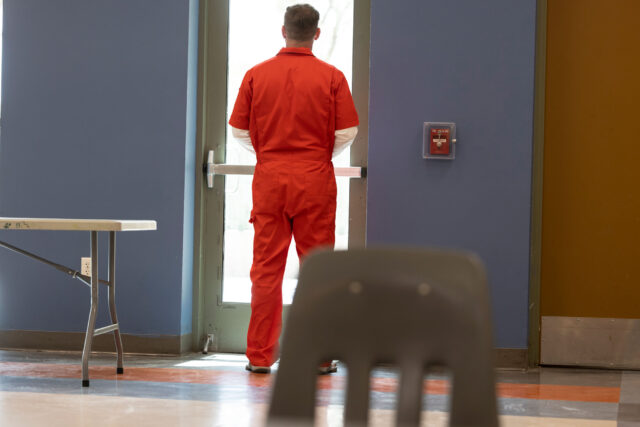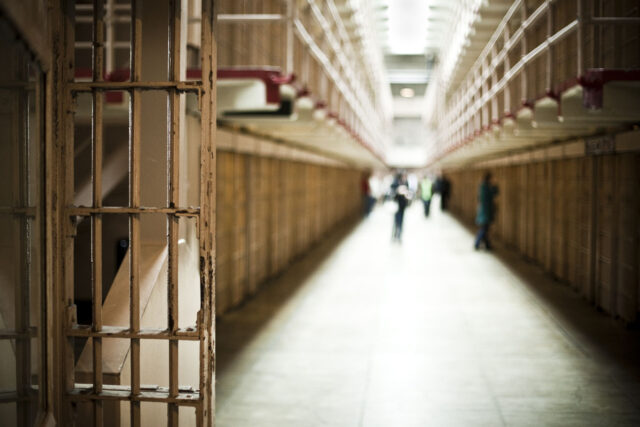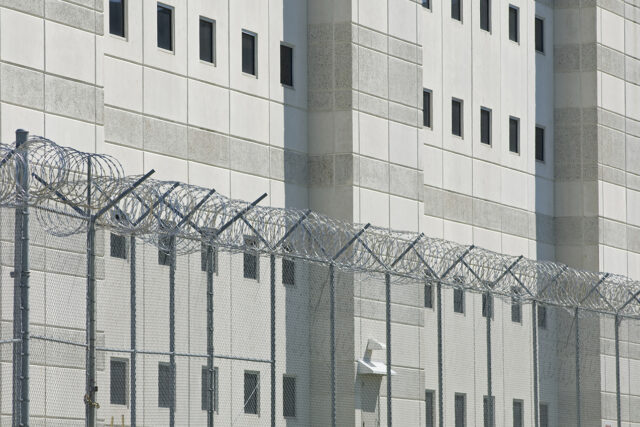California leads the nation in correctional reforms and reduced reliance on incarceration.In 2011, the state enacted public safety realignment, which shifted the management of lower-level felons from the state prison and parole systems to county jail and probation systems. Three years later, voters approved Proposition 47, which further reprioritized correctional resources and lowered incarceration. In this report, we describe the impact of these historic changes.
Over the past decade, California has reversed a long-term trajectory of increasing incarceration.
- Since reaching a peak in 2006 of almost 256,000 inmates, the total population incarcerated in California’s state prisons and county jails has dropped by roughly 55,000. The incarceration rate has fallen from 702 to 515 per 100,000 residents-a level not seen since the early 1990s.
- Realignment substantially reduced the prison population, but led to an increase in the county jail population of about 10,000 inmates, pushing the statewide jail population above its rated capacity and leading to more early releases due to overcapacity. Proposition 47 brought the statewide jail population down to pre-realignment levels.
Dramatically reduced incarceration from realignment did not lead to a broad increase in crime rates.
- Crime rates in California are on a long-term decline, though there are year-to-year fluctuations. Realignment resulted in an additional 18,000 offenders on the street, but through 2014, we found no evidence of an impact on violent crime. Auto thefts did increase, by about 60 per 100,000 residents in 2014.
- From 2014 to 2015, the violent crime rate increased by 8.4 percent and the property crime rate by 6.6 percent. The role of Proposition 47 on crime remains unknown, but preliminary data show that compared to other states, California’s increase in property crime appears to stand out more than its increase in violent crime.
Reforms have not yet succeeded in reducing the state’s high rates of recidivism.
- Rearrest and reconviction rates for offenders released from state prison are similar to pre-realignment levels. The two-year rearrest rate is 69 percent. The two-year reconviction rate (42%) is about 5 percentage points higher than before realignment, but this higher rate may simply reflect prosecution of offenses that in the past would have been processed
administratively. - Realignment helped stanch the flow of returning offenders to state prison for parole violation. Two-year return-to-prison rates dropped from 55 percent pre-realignment to 16.5 percent.
- Offenders released from state prison who are supervised by county probation have higher recidivism rates than those supervised by state parole. This difference is primarily due to a significantly higher share of so-called high-risk offenders among the former population.
Corrections spending continues to grow and is at historic highs.
- Despite lower incarceration, the state’s General Fund corrections spending is $10.6 billion-9 percent more than the $9.7 billion spent in 2010-11, the last year before realignment. Budgetary increases have funded additional capacity, medical and mental health care, bond repayment, and employee salary and benefits.
- Bringing down the prison population enough to close a state prison or eliminate the practice of housing prisoners in non-state facilities may be necessary to yield substantial reductions in costs.
California’s historic corrections reforms have brought some success and also presented new challenges, including changes in the composition of the jail population. Future efforts will need to keep incarceration and crime rates down, while beginning to lower recidivism and costs. Achieving these manifold goals will require that the state and counties work to identify cost-effective strategies in order to reduce crime and recidivism.
Topics
Criminal JusticeLearn More

County Jails House Fewer Inmates, but Over Half Face Mental Health Issues

Racial Disparities in Traffic Stops

Police Use of Force and Misconduct in California

New Bail Ruling Could Affect Tens of Thousands of Californians

Pretrial Reform in California

Reforming Pretrial Justice in California

Proposition 47’s Impact on Racial Disparity in Criminal Justice Outcomes

Recidivism of Felony Offenders in California

New Laws Expand Criminal Justice Reforms

California Probation in the Era of Reform

California’s County Jails in the Era of Reform


